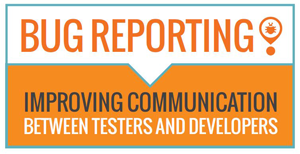 Having been in business for more than three decades now, we have sometimes been asked about the difference between our usability reviews and public beta organizations. Our customers are surprised to hear that in most cases, our QA Engineers perform comprehensive usability reviews while concurrently completing both functionality and cross-platform compatibility testing. The reason is simple.
Having been in business for more than three decades now, we have sometimes been asked about the difference between our usability reviews and public beta organizations. Our customers are surprised to hear that in most cases, our QA Engineers perform comprehensive usability reviews while concurrently completing both functionality and cross-platform compatibility testing. The reason is simple.
Each year, Beta Breakers tests in the neighborhood of 500 different software programs – from websites to complex enterprise-level business applications. While some programs share similarities, every single one is unique in both design and functionality. And each must be examined for usability so that it is well-received by the marketplace. A fair question to ask is: What good is a perfectly coded software application if its usability is cumbersome and/or non-intuitive?
The need for answers has resulted in a few companies specializing in gathering a bunch of people together, providing them access to an application, and gauging their feedback with regards to usability. This test is called a public beta. While the selected people tend to fall within the application’s target demographics, they are not trained quality assurance engineers and they often have trouble communicating their feelings in a clear and concise manner. In addition, in order to get meaningful data overall, public betas require a lot of people – a lot of people equates to a lot of expense.
Given the fact that our Beta Breakers QA engineers are responsible for testing hundreds of disparate programs each year, we naturally acquire an innate ability to recognize usability that is compromised. While the main task at hand may be to test a responsive website for compatibility compliance across a broad range of iOS and Android tablets and phones, our vast QA experience affords us the ability to report design flaws, unattractive fonts/palettes, or otherwise compromised usability. These issues are generally entered into the bug-tracking database as “low priority” given that they technically do not impact the functionality of the application; however, the point here is that they are documented in the database thereby providing our customers with useful usability feedback as they tweak the final release of their application.
Over the years, Beta Breakers customers have found that passing their programs through our labs not only helps them fix functionality and cross-platform compatibility issues, but provides them with important insight into the usability of their programs. And perhaps the best part of doing it the Beta Breakers way is that our customers gain great usability feedback for a fraction of the cost and effort of organizing a public beta.

 With Experience in Quality Assurance & Testing Desktop Software, Mobile Apps, Websites & Web Applications for Nearly 30 Years, Beta Breakers has become the Premier Software Quality Assurance Labs and Application-Testing Provider -
With Experience in Quality Assurance & Testing Desktop Software, Mobile Apps, Websites & Web Applications for Nearly 30 Years, Beta Breakers has become the Premier Software Quality Assurance Labs and Application-Testing Provider - 


Leave a Reply